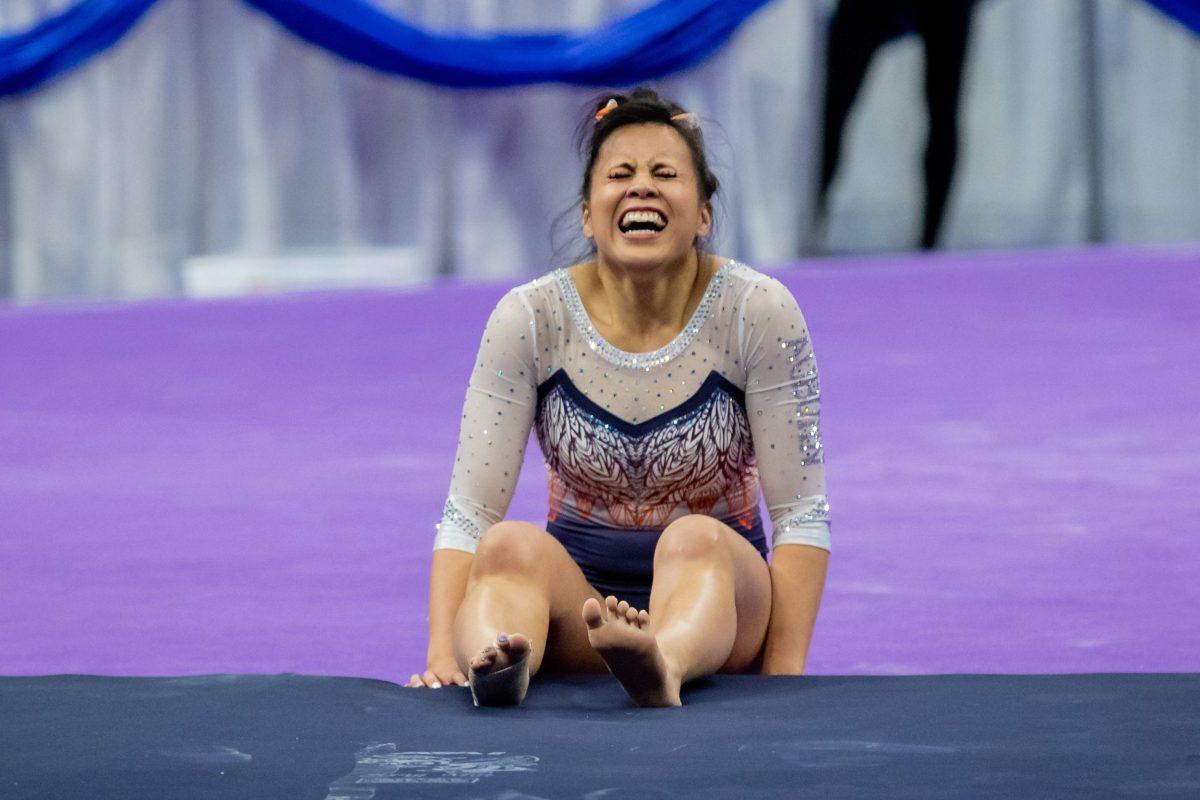An Auburn University student was injured last week after performing at a NCAA gymnastics regional finals. Samantha Cerio, a senior gymnast, appeared to have dislocated both of her knees after landing a stunt at the competition. Many have said that these sports could be considered mildly “dangerous,” and that precautions should be taken to potentially avoid injuries in the future.
According to Johns Hopkins Medicine, there are three factors that could lead to these injuries: lack of education and awareness about precautions and injury, inappropriate or lack of equipment, or poorly conditioned players. A study looking at college gymnasts concluded that injuries in men and women were somewhat similar, yet female injuries were usually more severe.
In 2015, it stated that the most common injuries were found in freshman-eligible athletes. To compare this to other sports, football has a ratio of approximately 8.1 injuries per 1000 players, while basketball only has about 1.94 injuries per 1000 players. While football and wrestling had similar injury rates for men’s sports, gymnastics had the highest rate for women. Soccer also caused the most injuries for women in college.
These sports would be considered more of a high risk sport, while swim and dive only had a ratio of about 1.8 injuries per 1000 people. Different sports in college universities may be putting some students at risk if more cautious actions are not taken. A majority of students that were injured in a college sport say that it has affected them throughout their lives.
According to the website Missouri Medicine, college football player Jacob S. Stueve, MD said that he is still paying a physical price for his career, stating, “Hopefully as more data is collected, rule changes and equipment improvements will result in better protection for football players at all levels.”
While gymnastics and football may have similar injury rates, football injuries include more concussions while gymnastics injuries involve more wrist/ankle fractures. The NCAA website provides a list of precautions and other guidelines for these student athletes. The website states, “Together with leading medical organizations, behavioral health centers and content matter experts, the SSI provides educational resources for member schools to promote and support the health and well-being of student-athletes.”
The resources available to college athletes may be helpful for them in competition, yet studies have shown that injuries occur very commonly during practice as well. According to the website Center for Disease Control and Prevention, “More injuries occurred in practices than in competitions for all women’s sports because more than twice as many athlete-exposures each year occurred in practices compared with competition.”
The student athlete has access to these guidelines and safety tips, yet there is no guarantee that these will prevent injuries in the future. As for senior gymnast Samantha Cerio, she will no longer be continuing in gymnastics. She quotes, “I truly appreciate all of the support and prayers that I have have received! I am doing well right now and getting lots of rest!”



































